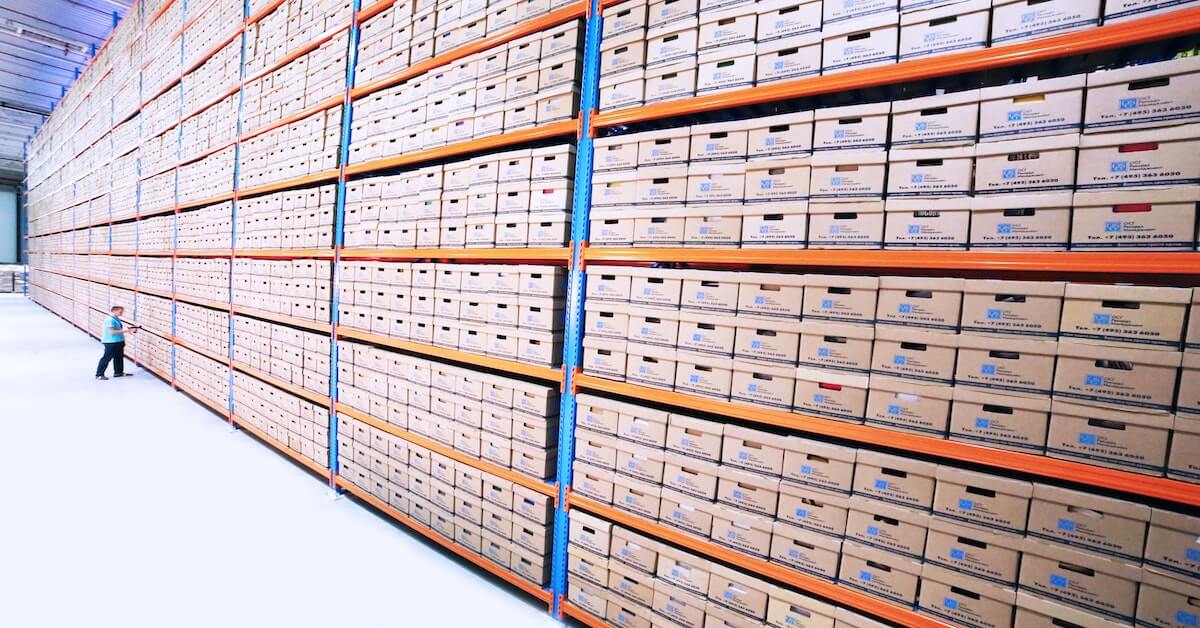Would you hop in your car to drive somewhere if you knew you had less than 65% chance of arriving where you intended to go? When you operate your business without end-to-end supply chain visibility, that’s what you’re doing with your inventory.
Supply chains are notoriously opaque. You must work with multiple vendors, suppliers, and transporters to stock your warehouses, shelves, and online store. Without visibility into your supply chain, managing all those parties can quickly become a full-time job—even for a small business.
This post will provide you with a simple step-by-step guide that will help you achieve end-to-end supply chain visibility now and in the future.
The Importance of End-to-End Supply Chain Visibility
To achieve end-to-end supply chain visibility, you must first understand what it is. Supply chain visibility refers to tracking products through your supply chain from production to the end customer.
Supply chain visibility is essential to the success of your business’s inventory processes. Without visibility into your supply chain, you’ll struggle to forecast your inventory needs accurately, avoid disasters like stockout, and keep your inventory and warehousing processes running smoothly.
Related: Synchronizing Sales Pace and Inventory Availability: The Secret to Optimal Stock Levels
On the flip side, when you achieve end-to-end supply chain visibility, you can enjoy benefits like:
- Valuable Insights: When you have visibility into your supply chain’s processes, it’s easier to make accurate ordering decisions. For example, if you need three thousand units but can see that a thousand units are in-transit, you know you only need to order two thousand.
- Faster Reaction Time: With supply chain visibility, you can identify disruptions or delays before they become catastrophes. When you have complete visibility across forecast, sales, and supply chain, you can more easily identify when your current and in-transit inventory will not support demand and make real-time demand planning changes to correct your course.
1. Establishing An Accurate Baseline
Step one to achieving supply chain visibility is to establish an accurate baseline. Determine your core KPIs and measure your current performance against those metrics. If you’re not already tracking core KPIs, some you may want to consider include:
- Carrying cost of inventory: total cost of holding and storing inventory
- Days of stockout: number of days a particular SKU is stocked out.
- Inventory turnover rate: How quickly inventory is sold and replenished
Once you’ve established your KPIs and current performance, look at your current pain points. What pieces of your supply chain puzzle are particularly challenging or opaque at this point? You’ll want to focus your efforts around these KPIs when making changes to achieve better supply chain visibility.
This step is vital because if you don’t know your starting point, it will be challenging to measure the effectiveness of your improvements.
2. Set SMART Goals
Armed with your baseline metrics, you are ready to set some goals. Ensure the goals you set are SMART goals, meaning they are Specific, Measurable, Achievable, Relevant, and Time-bound.
The goals you set in this stage of the process will serve as your action plan throughout the supply chain visibility improvement process. When setting your goals, consider the following questions:
- What benefits do you hope to see from this project?
- How can you improve your customer service experience?
- Are there any known issues you need to address?
Once you have the answers to these questions, you can set your budget and timeline for accomplishing these new SMART goals.
Without setting clear goals and sharing them across the team, you’ll have difficulty aligning and focusing your efforts.
3. Improve Relationships Throughout the Supply Chain
Step three to achieving end-to-end supply chain visibility is working to improve your relationships with the key players at all levels of your supply chain. Relationship-building is essential because, to achieve supply chain visibility, your chain will need to become a network of collaborators.
Build strong relationships with your vendors and manufacturers by approaching your efforts with a mutually beneficial mindset. How can end-to-end supply chain optimization and visibility benefit all the parties in your chain?
This step is vital because you’ll need access to data that only your vendors or suppliers can access if you want to achieve supply chain visibility. Building trust and cooperation across all parties will allow you to incorporate their information into your own dashboards and reporting efforts.
4. Choose the Best Software Solution
Once you have cooperation and trust across your supply chain, your next step will be to build out your tech stack. Supply chain visibility isn’t possible without a top-tier inventory planning software solution.
No software solution is the best fit for every business. Instead, you’ll need to research solutions and choose the software that works best for you. You can determine the best fit for your business by examining your goals and considering your current inventory planning pain points.
Without the right software solution, your supply chain visibility efforts will be inefficient at best and impossible at worst. A software solution like Flieber can help you optimize your inventory and maximize sales by giving you the data and tools you need to always have the right products in the right place at the right time.
Related: 5 Best Supply Chain Visibility Software Your Tech Stack Needs
5. Track Your Progress
The last step to take when working toward end-to-end supply chain visibility is to track your progress. Keep track of your KPIs and measure your progress toward the goals you set in step two of this process.
This step is important because, without measuring your progress, you’ll never know whether you’ve genuinely improved your processes or not. Tracking progress will also highlight the remaining weak points in your supply chain visibility efforts, allowing you to make improvements wherever needed.
Be sure to measure your key metrics and report the results across the team regularly. This will help keep your team focused on the objective and maintain momentum toward the goal of total supply chain visibility.
Improving Your End-to-End Supply Chain Visibility
If you want to avoid stockout, minimize the effects of supply chain disruptions, and optimize your inventory and replenishment processes, end-to-end supply chain visibility is essential.
End-to-end supply chain visibility is even more important for businesses selling across multiple channels. A solid visibility plan will help you maintain clarity and alignment across all your distribution channels.
Flieber offers a best-in-class supply chain visibility solution that connects real-time data from every stage in your supply chain, helping you make the right decision regarding inventory planning and replenishment.
To see how Flieber can help you with your supply chain visibility challenges, schedule a demo of our software solution today!





